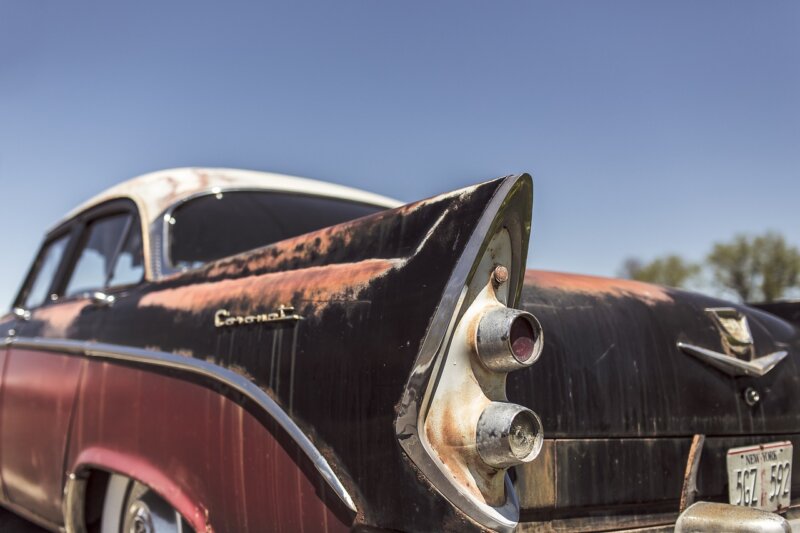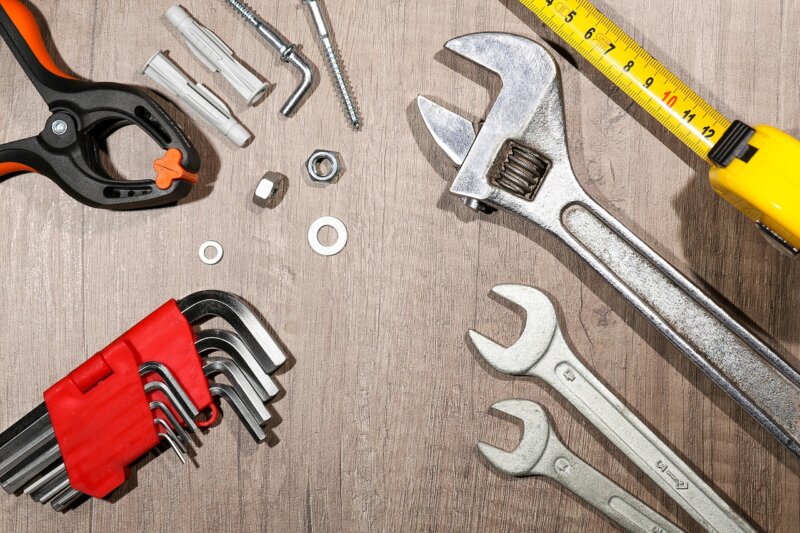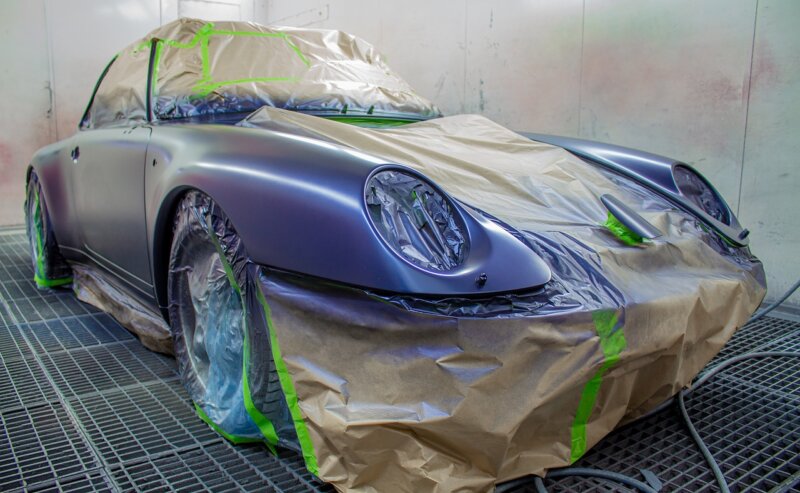Track days should feel exciting, not stressful. Clear steps make Track Preparedness simple. Focus on Brake Pads, Brake Fluid, Torque Specs, and Inspection. Tackle the basics first, then fine tune the rest.
Inspecting Brake Pads and Rotors
Strong brakes build confidence on track. Pads grip the rotors, which are the metal discs. Both must be healthy for safe stops at speed.
Check for sufficient pad thickness and rotor wear
Start with a quick brake inspection. Pad thickness should be more than 50 percent for track use. Thin pads fade fast as heat rises. Many factory pads struggle above 1,000 degrees Fahrenheit.
Rotor thickness matters too. The rotor is the disc your pads clamp to. Look up the minimum rotor thickness for your vehicle. Do not run below that number, since thin rotors can crack and lengthen stopping distance.
Pull the caliper to see the inner pad. Uneven pad wear can signal stuck slide pins or a sticky caliper piston. That often shows up as one pad thinner than the other.
Make this a full system check. Inspect the master cylinder, look at the fluid color, and scan for leaks. Small fixes now save a big headache later.
- Measure pad thickness at several spots, not just one edge.
- Measure rotor thickness with a micrometer, compare to the spec.
- Clean rust from the pad ears so they slide freely.
Example, if the rotor measures just above minimum, plan a replacement before the next event.
Look for cracks or uneven surfaces on rotors
Heat can leave the rotor with small cracks or hot spots. Hot spots look like dark patches or blue rings. Both reduce friction and hurt your brake feel.
Grooves and scoring also point to trouble. Deep grooves mean a pad wore unevenly or trapped debris. A rough surface can lengthen stopping distance and increase pad wear.
If you find big cracks, chips, or very deep grooves, replace the rotor. Do not ignore odd patterns either. Uneven surfaces can lead to brake shake under hard stops.
Spin each rotor by hand and look closely. Catching damage in the garage is safer than discovering it at 110 miles per hour.
Inspecting Brake Fluid
Brake fluid transfers your foot pressure into clamping force. It is a hydraulic fluid, which means it moves force through liquid. Heat and moisture lower its performance, which raises risk on track.
Flush and replace with high-performance brake fluid
Flush old fluid every six months if you track often. Use high-performance fluid like Motul 660. It has a higher boiling point, so it resists heat better during long sessions.
Moisture gets into fluid over time. That lowers the boiling point and can cause a soft pedal. A soft pedal on track can lead to long braking zones or even brake fade.
Track cars need fresh, quality fluid at least yearly. Bleed all four corners until clean fluid appears. Keep the reservoir full during the process to avoid air in the lines.
- Start with the corner farthest from the master cylinder.
- Use a clear hose to watch for air bubbles.
- Do not mix fluid types unless the label says they are compatible.
Example, if the pedal firms up after a flush, the old fluid was likely heat soaked.
Check for leaks in the brake lines
Leaks cut stopping power and can cause sudden failure. Look for clear or yellow puddles under the car. A pedal that slowly sinks can also point to a leak or failing master cylinder.
Check fittings, the master cylinder, calipers, and flexible lines for wet spots. OEM, or original equipment manufacturer, rubber lines can dry out with age. Stainless steel braided lines resist swelling and hold a firmer pedal.
Fix any leak before the event, even a small one. Safety depends on consistent pressure. If you are unsure, have a pro inspect the hydraulic system.
Proper Torque Specifications
Torque is the twisting force applied to fasteners, measured in foot-pounds. Using the right torque keeps Wheels and Suspension secure. A quality torque wrench is a must for any mechanical check.
Ensure lug nuts are torqued to manufacturer specs
Use a torque wrench, not an impact gun, to tighten lug nuts. Check your owner manual for the proper Torque Specifications. Many cars fall between 80 and 120 foot-pounds, but verify your exact number.
Tighten in a crisscross pattern to spread load evenly. Clean, dry threads help you reach the true torque. Oily or dirty threads can throw off the reading and stretch studs.
Retorque after 50 to 100 miles on new wheels or studs. Heat cycles and seating can loosen hardware slightly. Recheck before the first track session each day.
- Set the wrench to the correct torque setting.
- Stop when it clicks, do not add extra force.
- Recheck torque on hot wheels only after they cool down.
Example, if your spec is 95 foot-pounds, set the wrench to 95 and stop at the first click.
Verify suspension components are properly torqued
Track grip puts heavy load on the suspension. Bolts can loosen from high g-forces and repeated curb hits. Re-torque all key fasteners before the event.
Focus on inner and outer tie rods, control arm bolts, sway bar links, and strut mounts. Watch for torn boots, leaking shocks, bent parts, and worn bushings.
Use blue thread locker on critical fasteners where the manual allows it. Follow torque values in your service guide. Handling stays consistent when parts are tight and aligned.
If you hear clunks or feel play, stop and inspect. Small noises often point to a loose fastener or failing joint.
Tech Inspection Essentials
Tech inspection is your safety net. It confirms Vehicle Safety, Fluid Maintenance, and basic setup before you roll out. Many events share similar checklists based on common risks.
Confirm battery is securely fastened
A loose battery can move under hard braking or cornering. Movement can short the terminals, damage wiring, or become a projectile in a crash. Tracks require proper tie downs for this reason.
Check the hold down bracket for a snug fit. There should be no side to side or vertical motion. Many tech forms, like those from The FIRM, call this out clearly.
Use the correct clamps and hardware per the manufacturer. Homemade straps often fail under load. Secure mounting protects you and everyone on track.
This quick step improves your safety plan. Next, scan the cooling system for leaks and weak parts.
Inspect for leaks in coolant hoses and other systems
Cooling keeps the engine happy at high load. Check coolant hoses for cracks, bulges, soft spots, or wet areas. Old rubber can split under pressure and cause a rapid overheat.
Press along the hose to feel for weak sections. Replace any suspect hose with nylon-reinforced silicone for better durability. Use new clamps if the old ones feel loose or rusty.
A pressure tester can reveal slow leaks at the radiator, water pump, or connections. Puddles under the nose of the car or low coolant in the reservoir are warning signs.
Flush and replace coolant about every two years. Fresh coolant improves heat transfer and corrosion control. Fix leaks before track day to protect the engine.
Final Track Day Checklist
A simple checklist keeps you calm in the paddock. Set a routine, then repeat it before each session. Small habits prevent big mistakes.
Verify tire pressure and tread wear
Set cold pressures, then confirm hot pressures after a session. Follow the tire maker or vehicle guide for a safe starting range. Use a quality gauge for repeatable readings.
Check tread depth across the tire. Aim for at least 2/32 inch for basic safety, though more tread gives a larger margin. Street tires work fine if they are healthy.
Look for cuts, cords, dry rot, or punctures. Inspect the outer edge, center, and inner edge for uneven patterns. High speed running can chew the inner shoulder quickly.
A pyrometer, a simple temperature probe, helps read heat across the tread. Hot in the middle can mean too much pressure. Hot shoulders can point to alignment or low pressure issues.
- Torque the lug nuts after each wheel change.
- Remove stones from grooves to protect the rubber.
- Mark starting pressures on tape near the dash.
Pack safety equipment and necessary tools
Bring safety gear first. Then tools and fluids.
- Helmet, gloves, and driving shoes; a suit if required.
- Vehicle owner manual for fast reference.
- Tool kit with wrenches, sockets, screwdrivers, pliers, and a torque wrench.
- Shop towels and glass cleaner for visibility.
- Engine oil, high-performance brake fluid, and distilled water for the radiator.
- Floor jack, jack stands, and wheel chocks.
- Duct tape or painter’s tape for quick fixes and number panels.
- Tire pressure gauge and a small flashlight.
- Healthy snacks, water, hat, and a folding chair.
Keep the cabin clear. Loose items can fly during hard braking or quick steering. A small parts bin keeps nuts and bolts easy to find.
If you plan Performance Upgrades at the track, schedule time between sessions. Rushing increases mistakes. Better to finish one clean run than chase big changes all day.
Bottom Line
Good prep makes a great day. Strong Brake Pads, fresh Brake Fluid, and correct Torque Specs give you confidence. Careful Inspection of tires, coolant hoses, and battery hold downs reduces surprises.
Fix small issues in the garage, not on pit lane. Ask a qualified shop for help if anything feels unclear. This advice is general guidance, not a substitute for professional service or your event rules.
Take care of the basics, then focus on smooth driving. That is where the fun lives.







